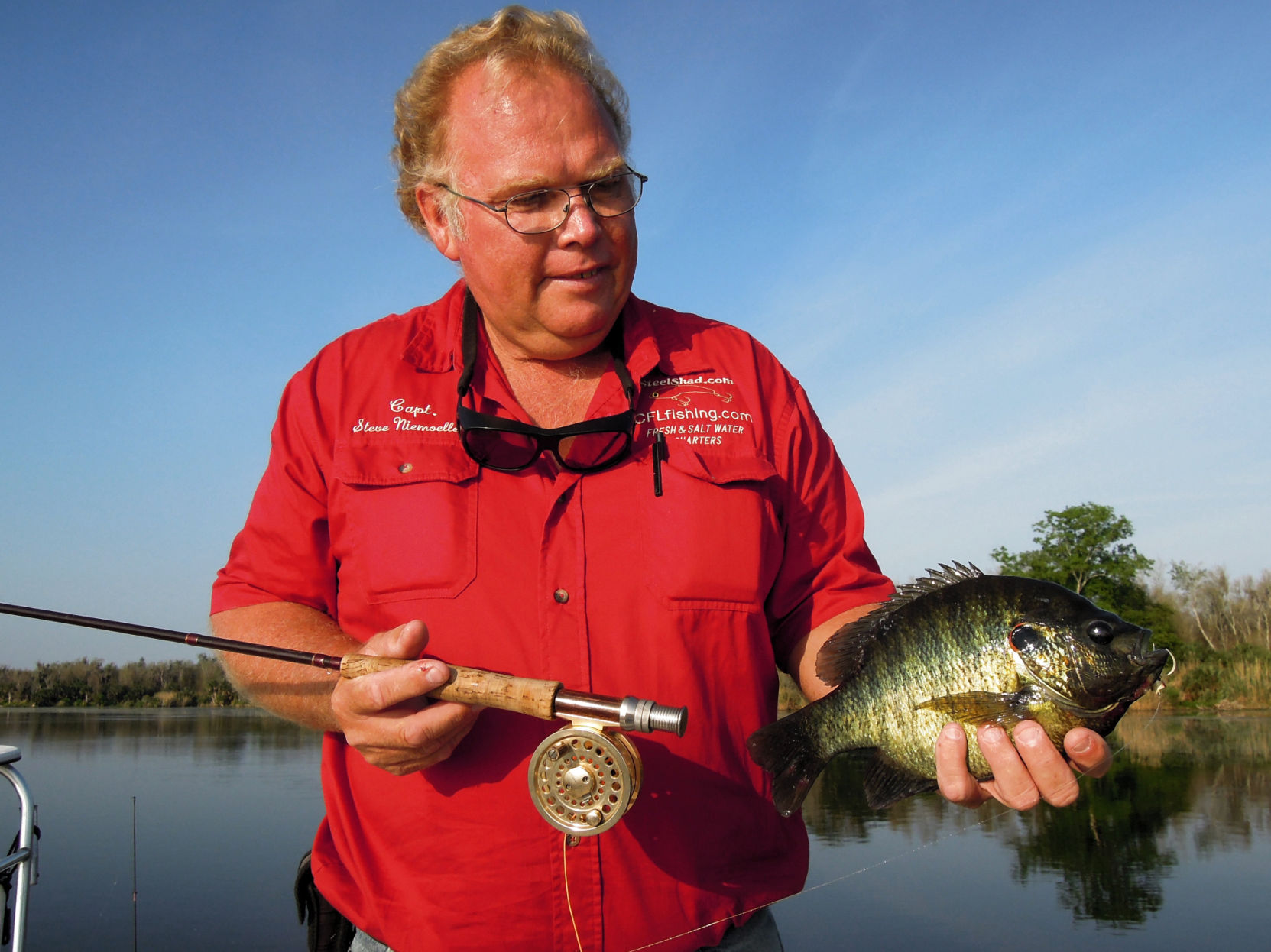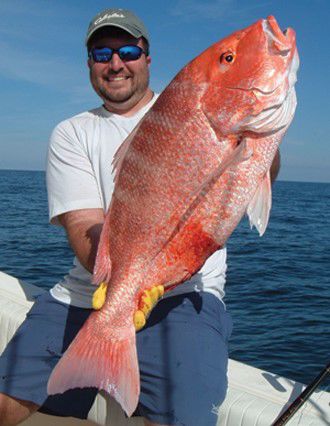Unity, diversity seen as key to industry recovery
June 2, 2015Stay safe on the beach
June 2, 2015One hot afternoon, we struggled to find fish in a sweltering Louisiana bayou, until we noticed some activity up ahead. In a stretch of cypress-lined shoreline about 20 yards long, water boiled with activity.
Millions of newly hatched mayflies covered the branches of overhanging bushes. Mayflies spend most of their lives underwater as nymphs. When the weather turns warmer in late spring and summer, they sprout wings and emerge from the water to mate. After coming out of the water, they cling to overhanging branches to dry their new wings. Many flies fall into the water, attracting every fish in the area. After mating, the flies die, adding more protein to the food chain.
Below the branches along this bayou, the water churned as if frenzied piranhas were devouring a water buffalo. Fish of every species annihilated anything that touched the surface. We immediately whipped out our fly rods and went to work with cork poppers. Color didn’t matter. If the bug hit the honey hole, a big bluegill or other fish instantly smashed it. If the bug dropped just out of the sweet spot, we simply wasted time.
Unfortunately, a brutal wind quickly propelled us out of the strike zone after only about two casts. Having neither an anchor nor a trolling motor, we couldn’t keep the 12-foot aluminum boat in place. Moreover, the old flatboat leaked so badly that we had to bail it with a plastic milk jug about every 30 minutes.
Still, we formulated a plan. We cranked up the 6-horsepower outboard and headed upwind to set up a drift past the strike zone. Fortunately, the wind blew us right down the bank, so we could drift the shoreline. Unfortunately, the breezes blew us almost faster than the old motor could push us. As we drifted within casting range, we furiously made a few quick casts before the wind blew us out of range. Hopefully, we didn’t snag anything on the cast.
By the time we shot past the honey hole, the boat needed bailing again. We bailed the boat dry and hoped the engine would crank again. Fortunately, it did. We ran the outboard up past the bug-laden bushes for another drift, repeating this effort many times that afternoon until we grew tired of catching panfish.
Although fly fishing in salt water for redfish and other briny bruisers increases in popularity every year in south Louisiana, diminutive panfish can provide incredible action on ultralight fly tackle. Pound for pound, or more appropriately ounce for ounce, nothing outfights a bluegill. When hooked on light tackle, bluegills make determined runs, swim in circles and use their flattened bodies as leverage.
Among the most abundant freshwater fish, bluegills and other panfish eat almost anything they can fit into their tiny mouths, including minnows, worms, grubs, bread, crustaceans and table scraps. They particularly relish insects. When feeding near the surface, their little mouths make distinctive snapping noises. Quite audible for considerable distances, these snaps allow anglers to zero in on feeding panfish.
Bluegills strike flies, streamers, nymphs or other creations, but small floating “popping bugs” make deadly topwater enticements. These “bugs” made of cork or wood adorned with feathers and rubber “legs” come in many color combinations. Anglers may also use plastic or foam creations that resemble tiny frogs, crickets, grasshoppers, dragonflies or other creatures.
Toss a popping bug or fly to a likely spot such as near a downed tree, dock piling, stump, lily pad, cypress knee or a shoreline. When fishing a floating bug, let it rest on the surface until the ripples fade. Then give it a small twitch or pop before pausing again for several seconds.
Sometimes, fish want dynamic action. Sometimes, fish prefer subtlety. Non-aggressive fish often hit bugs sitting still on the surface. Frequently, just a slow, steady pull across the surface attracts attention.
When aggressively feeding or defending their nests, bluegills attempt to obliterate a popper. The lucky fisherman might think a five-pound largemouth bass just pulverized the bug. At other times, bluegills and other sunfish appear almost timid, gently tasting the apparent morsel before committing itself to strike. Frequently, they simply suck down a bug. All of a sudden, a bug vanishes with hardly a ripple breaking the surface.
If an angler misses the first strike, that fish or one of its brethren might strike the bug again as jealous fish race their cousins for meals. Keep casting in the same area as long as fish keep striking. Gregarious little creatures, hundreds of fat bluegills might inhabit one good bedding area. If strikes cease, change bug colors or give the area a rest. Return a few hours later. Sunfish frequently feed all day and seldom move far from their beds or protective cover.
Anglers don’t need a lot of fancy equipment to cast flies for bluegills. A 7.5- to 8-foot long ultralight to light action fly rod works great. Floating line and a length of leader completes the package. People can buy fancy ready-made leaders, but a 6- to 10-foot length of 4- to 10-pound test line stripped from any fishing reel makes excellent leader material. Use monofilament when fishing with floating poppers and fluorocarbon line for subsurface temptations since fluorocarbon sinks quickly.
In Louisiana, anglers can fish for several panfish species, but most people simply lump them all under the name of “perch” or “bream.” Among the most common and widespread, bluegills derive their name from the navy blue “ear flap” near their gills. They can live in practically any freshwater or brackish system, but prefer quiet waters with considerable weedy or stumpy cover where they can hide. Good places to look for bluegills include ponds, bayous, canals or lakes with abundant vegetation. A bluegill can weigh nearly five pounds, but few exceed one pound. The Louisiana fly rod record weighed 1.64 pounds.
Also called a chinquapin for its light color or shellcracker because it relishes snails, a redear sunfish looks like a lighter version of a bluegill, but with orange to red highlights on its “ear flaps.” They range throughout the state and can inhabit tidal marshes. Redear sunfish generally feed on the bottom, while other bream species readily attack surface targets. One of the largest panfish species, it commonly weighs more than one pound and may top five pounds. The state record weighed 2.87 pounds.
One of the most distinctive panfish species, a warmouth looks similar to a bluegill in color, but with the shape and mouth of a bass. Also called a goggle-eye or redeye bass, these thick, dark fish love swamps, shallow weedy lakes, sluggish bayous and canals with thick vegetation and soft, muddy bottoms. With its large mouth, it frequently attacks spinnerbaits, plastic worms and other bass lures. A warmouth may weigh more than two pounds, but few reach one pound. The state record, a 2.13-pounder, came from the Atchafalaya Basin.
Regardless of species, anglers can typically find a bunch of panfish in almost any Louisiana waterbody. Many south Louisiana freshwater lakes, bayous and canals hold good populations of these abundant and tasty fish. Called panfish because they fit nicely in a pan of hot grease, bluegills taste delicious with sweet, white meat and make a fine meal.
*John N. Felsher grew up hunting and fishing in south Louisiana. If you have an idea for a future column or would like to invite him on an adventure, contact him through his website at www.JohnNFelsher.com.
Steve Niemoeller shows off a redear sunfish, or chinquapin, he caught on a fly rod. The fish are biting in local waters, which makes for a good summer trip, according to John Felsher.







